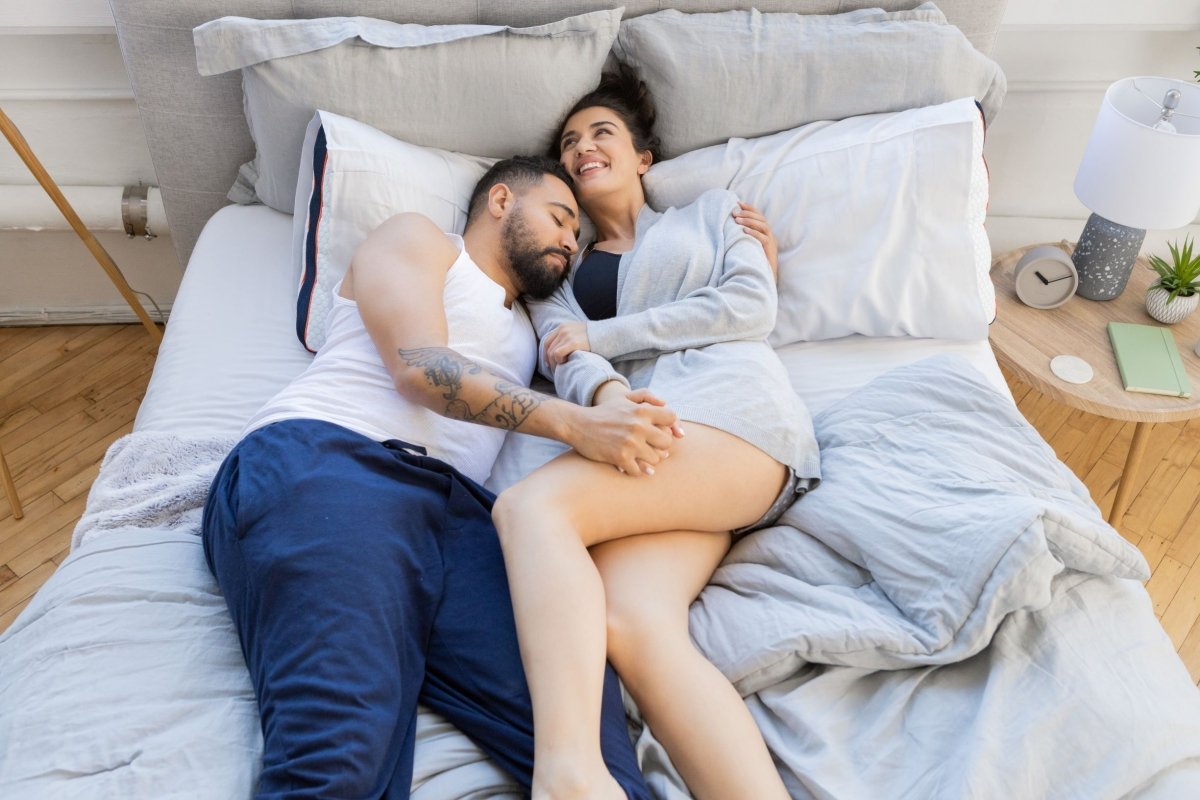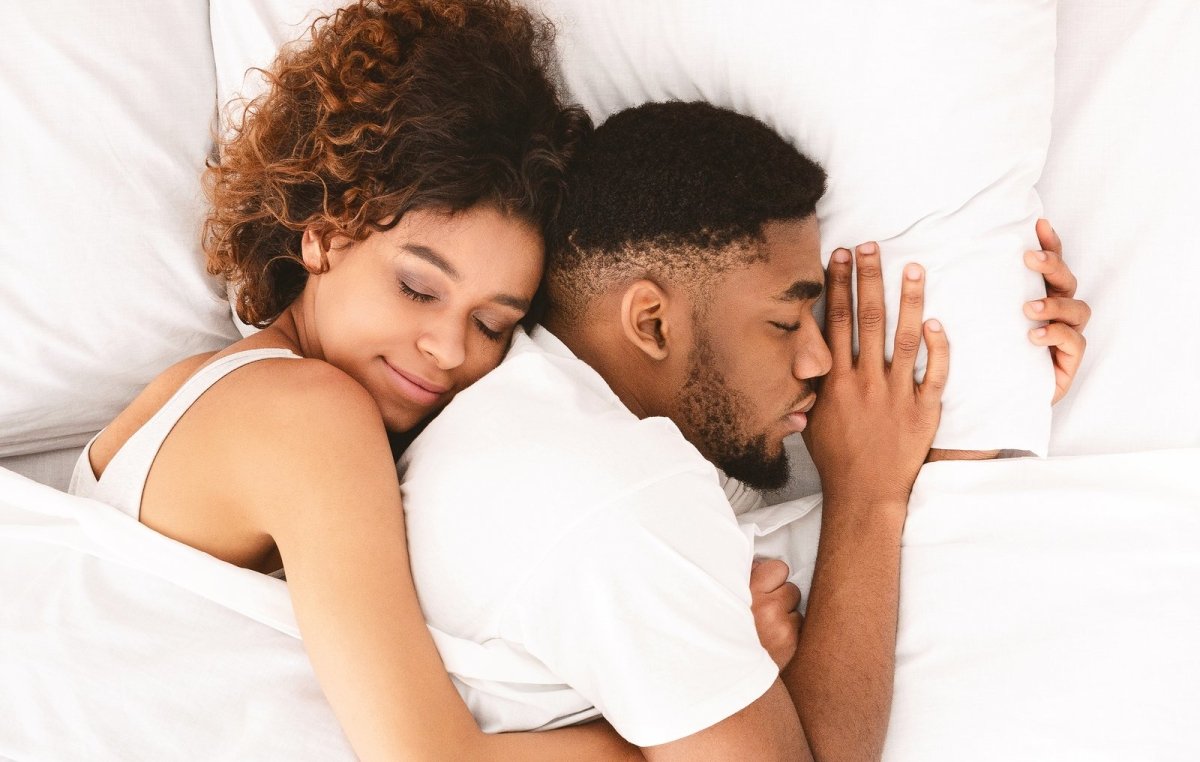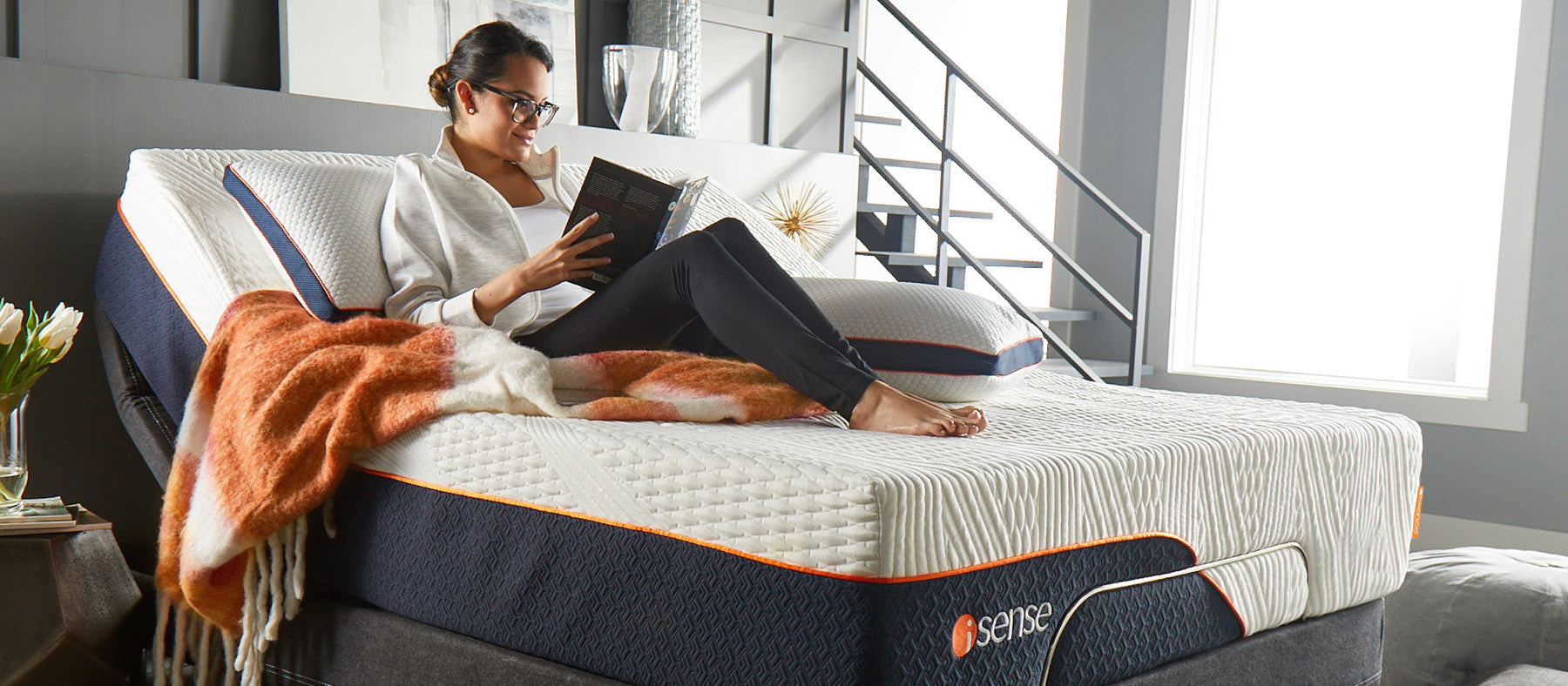At isense, we’re always working to stay on the cusp of all things sleep. Sometimes great sleeping tips surprise even our experts. What can we say? Science is exciting and sometimes strange. Getting a great night’s sleep is specific to each person and each couple, and we have definitely found some unique tips for good sleep.
If you and your partner have tried all the usual healthy sleep habits and you’re still struggling to fall asleep and wake up rested, it’s time to consider these research-backed recommendations that might just blow your mind. It turns out common sense sleep advice that relaxes most couples off to dreamland might need to be switched up for others.
Tips for Getting a Good Night’s Sleep
Good sleep solves real-life problems, but sometimes you’ve got to care for some physical and psychological needs to fall asleep in the first place. These seven sleeping tips will help you and your partner relieve stress, breathe easy, boost sleep hormones and more.
- Wear Warm Socks…But Turn Down the Heat
This might sound like an odd combination—OK, it is an odd combination—but it actually works. Researchers have found that people who keep their feet warmer fall asleep faster. Warmth causes the blood vessels in your feet to expand, in a good way, which tells your brain it’s time for dreamland. This doesn’t mean you should turn up the thermostat before hitting the hay, though. A cooler sleep environment is generally more conducive to sleeping because it mimics the natural drop in your body temperature as you sleep.
Experts suggest you set your bedroom to between 60 and 67 degrees, and wear warm socks, or place a fleece blanket over your feet if socks aren’t your style.
- Read a Book for Pleasure
Reading before bed is a very common habit. The key here is reading a book you enjoy—not a digital device or a glossy magazine and definitely not work emails or briefs. Some non-reflective e-readers that are not backlit are OK, too. Just avoid anything that emits blue light or reflects a reading light into your eyes, as light plays an important role in your ability to fall asleep.
When you read a book, you can escape the stresses of everyday life and exercise your eyes at the same time. The result? Researchers have found that reading reduces stress and is more relaxing than listening to music or enjoying a soothing cup of tea.
- Get Out of Bed
This might seem like bad advice for people seeking tips for good sleep, but hear us out. If you’re having trouble falling asleep, after a while, lying in bed thinking about how much sleep you’re losing can actually keep you up longer. That’s why many sleep experts say to get out of bed and do other relaxing activities, like reading or meditating to take your mind off of your insomnia. Keep the lights down low and don’t start your normal morning routine unless it’s actually close to your usual wake-up time. Plus, turning up the lights could disrupt your sleep even more or wake up your partner.
Try lying back down whenever you start to feel sleepy but don’t pressure yourself by looking at the clock and doing the math in your head. You know what math we’re talking about—counting how many hours until your alarm goes off will just stress you out even more.
- Open a Window
Do you take a walk on your lunch break to get some fresh air and escape your stuffy office? Well, getting fresh air has sleep benefits, too. Obviously, opening a window during extreme temperatures and wild weather conditions is not a good idea. But on a mild night, creating more fresh-air ventilation can improve your sleep by replacing the carbon dioxide in your room.
A recent study found that simply opening a window and door can significantly improve how quickly you fall asleep and how long you sleep through the night. An open window and door can also provide some white noise to help you nod off even faster.
- Take a Deep Breath
If you’ve already opened your bedroom window, why not take this sleeping tip one step further and practice some snooze-inducing breathing exercises? The National Sleep Foundation recommends a very easy relaxation ritual that involves focusing on the rhythm of deep breaths and scanning each area of your body for tension from head to toe. As you notice any discomfort along the way, peacefully breathe into that part of your body to release tension. This exercise is very similar to mindful meditation that you can practice while lying down in bed.
Including meditation and mindful breathing in your routine can help you manage stress, anxiety and tension throughout the day and night. Practice as a couple for the added benefit of releasing tension in your relationship.
- Eat Kiwis and Tart Cherries
Fruit might not be the first thing you think of when it’s time to get more sleep, because sugar can usually give you an energy buzz. But there are several fruits that help you sleep, thanks to certain nutrients like serotonin. Kiwis and tart cherries have both been studied for their sleep-boosting properties and the results are positive. Eating one to two kiwis in the evening can help you fall asleep faster and sleep better than skipping this super fruit. Serotonin-rich tart cherries—usually available in juice form—give similar benefits when you drink one to two glasses with or after dinner.
The FDA recommends adults consume two servings of fruit each day to get plenty of vitamins, minerals and other nutrients. Choose kiwis and tart cherries and you’ll enjoy a delicious and healthy treat that also promotes a great night’s sleep. Who knew tips for getting a good night’s sleep could taste so good?
- Adjust Your Bed…And Your Sleep Position
Even when your bed feels comfortable to the touch, you might still be tossing and turning in your sleep due to other problems. That’s the thing about comfort—it can help you relax, but it’s not always the best predictor of sleep quality. Depending on your sleep position, you could be more susceptible to sleep disruptions. For example, people who sleep on their backs are more likely to snore, and stomach sleepers tend to experience neck and back pain from poor alignment. Unresolved, these issues can make it more difficult to fall and stay asleep.
Changing positions to sleeping on your side is one of the simplest ways to prevent some sleep conditions, and you can make that transition easier and healthier by adjusting your mattress. isense makes the top-rated mattresses for couples. We’ve made it easy for you and your partner to make adjustments to each side of the bed independently with dual Comfort Control™. If you experience joint pain and your partner snores, you can both adjust your firmness settings to support a better sleep position. At the end of the day, each of you gets to experience the comfort and sleep quality you deserve and wake up rested and refreshed.
Looking for more sleeping tips for couples? isense is more than a mattress maker. We’re problem solvers, and a great night’s sleep can change your life and your relationship for the better. Follow the isense blog for the latest tips on getting a good night’s sleep.






















